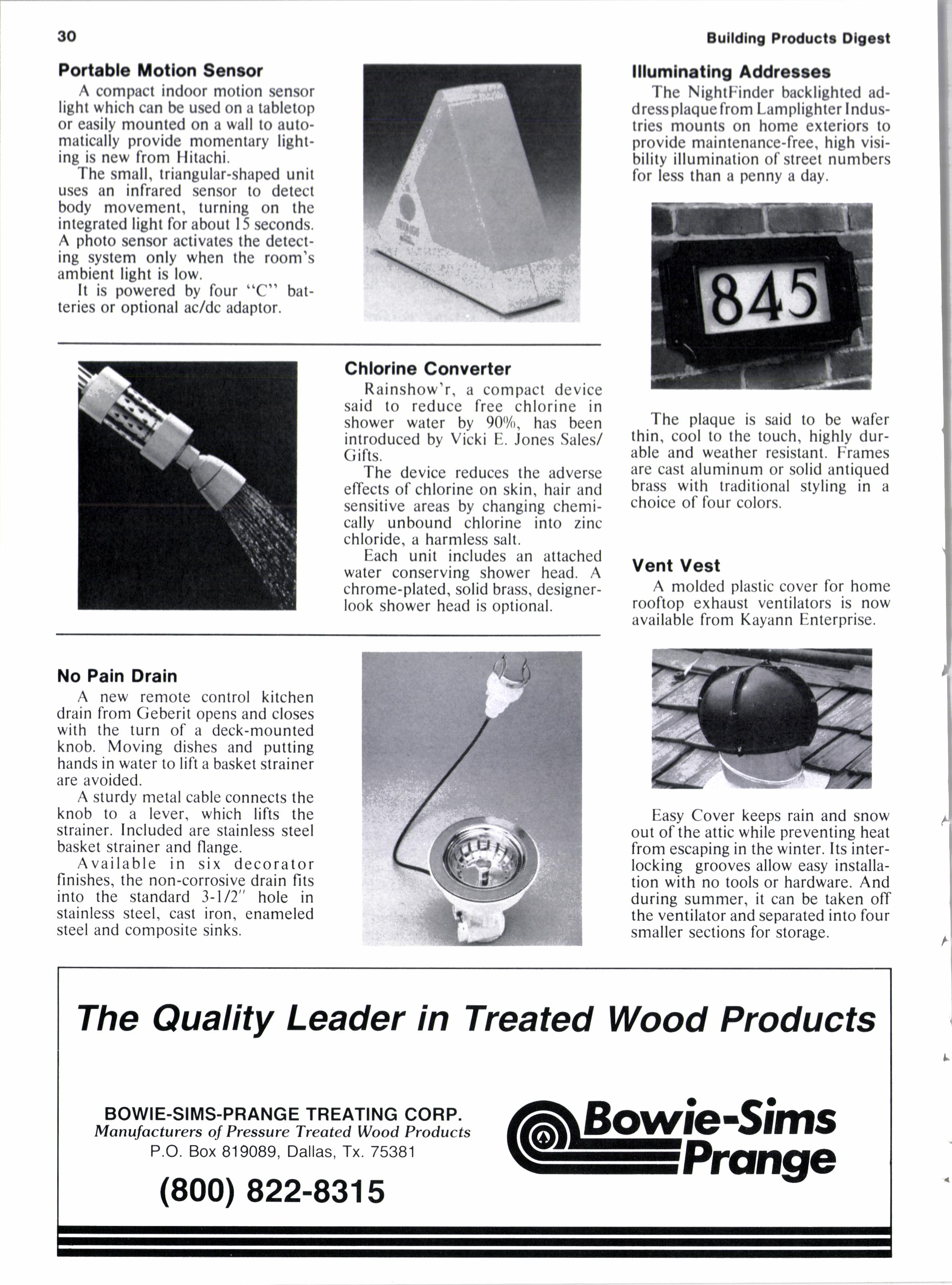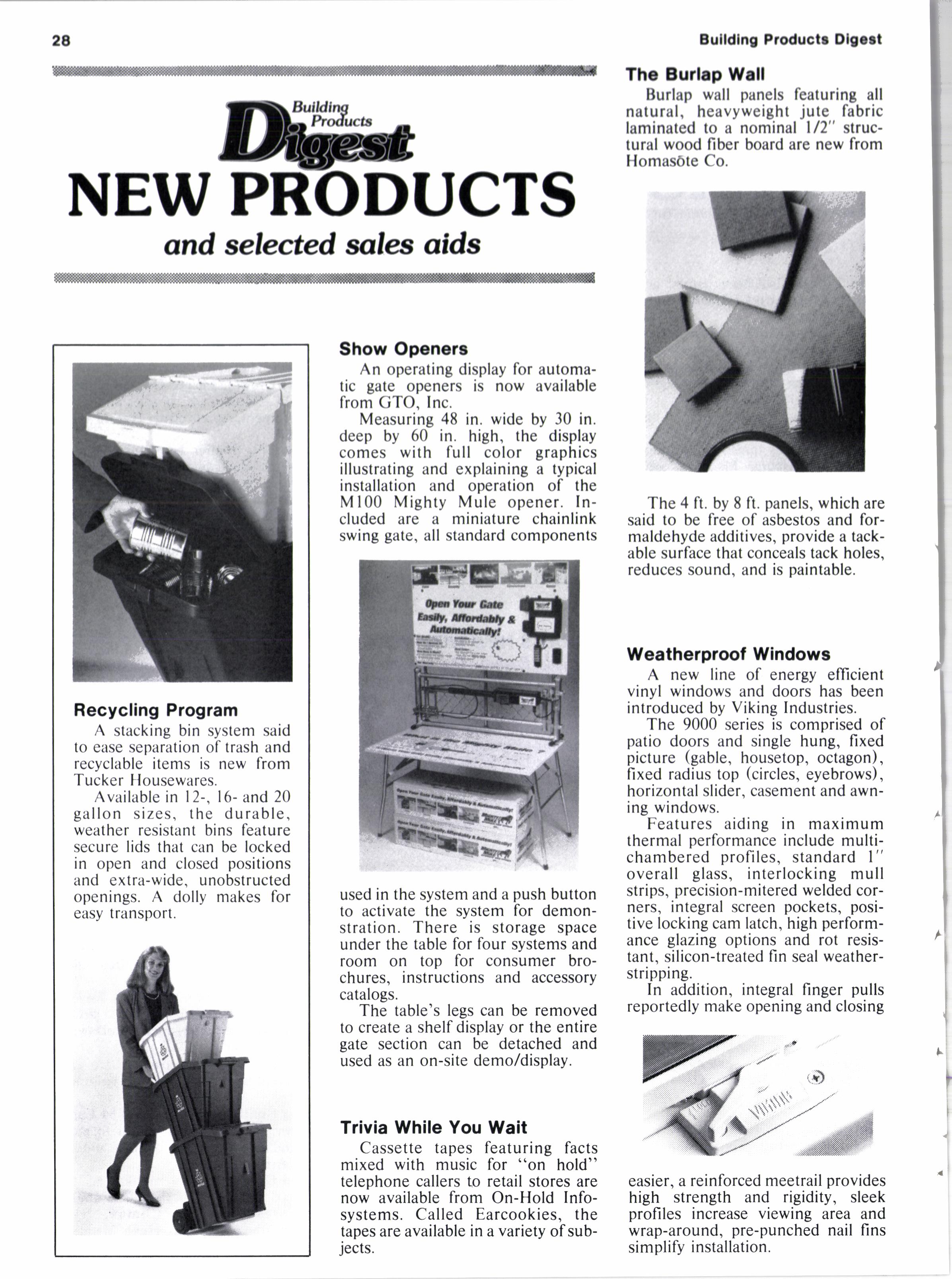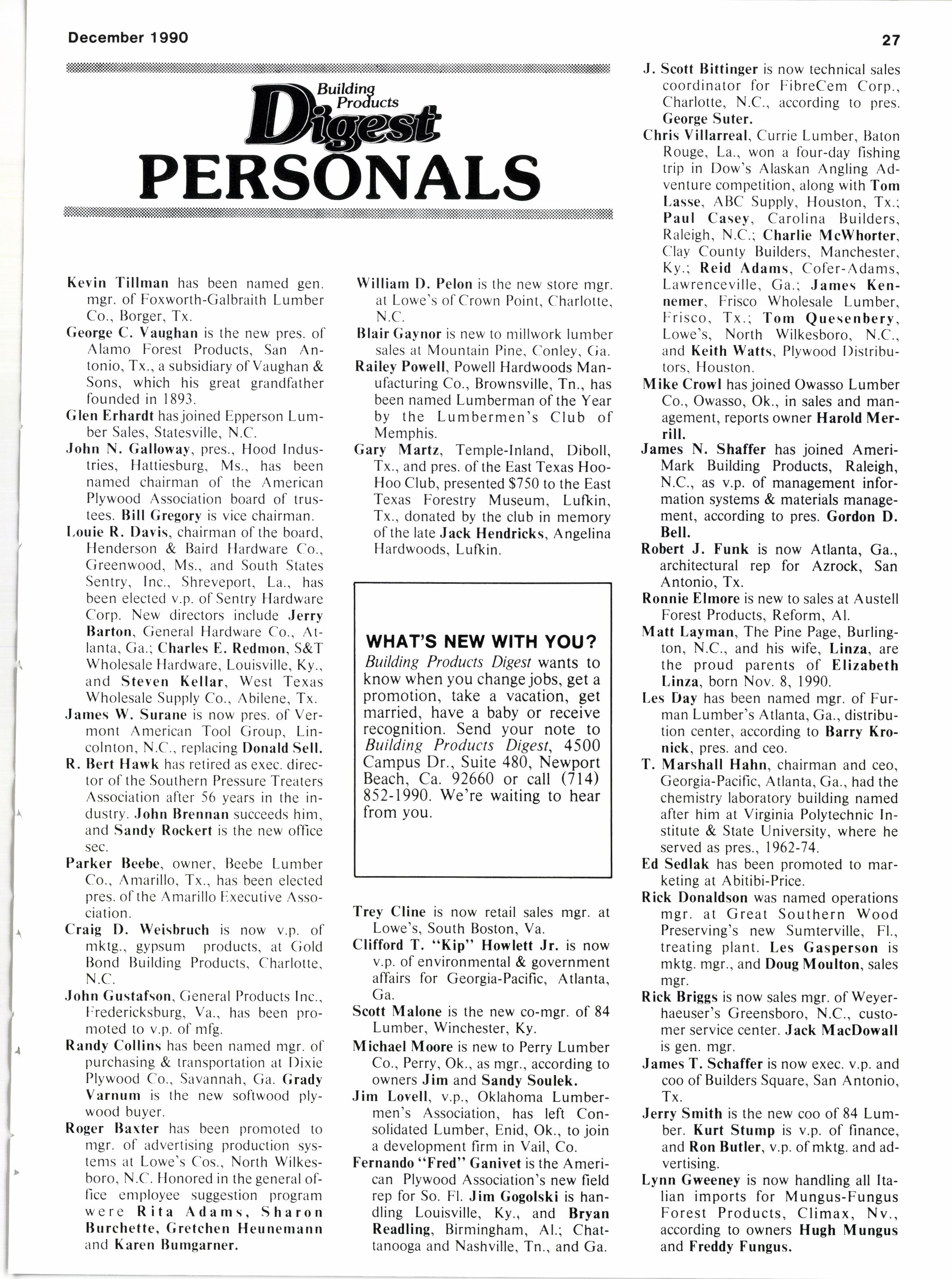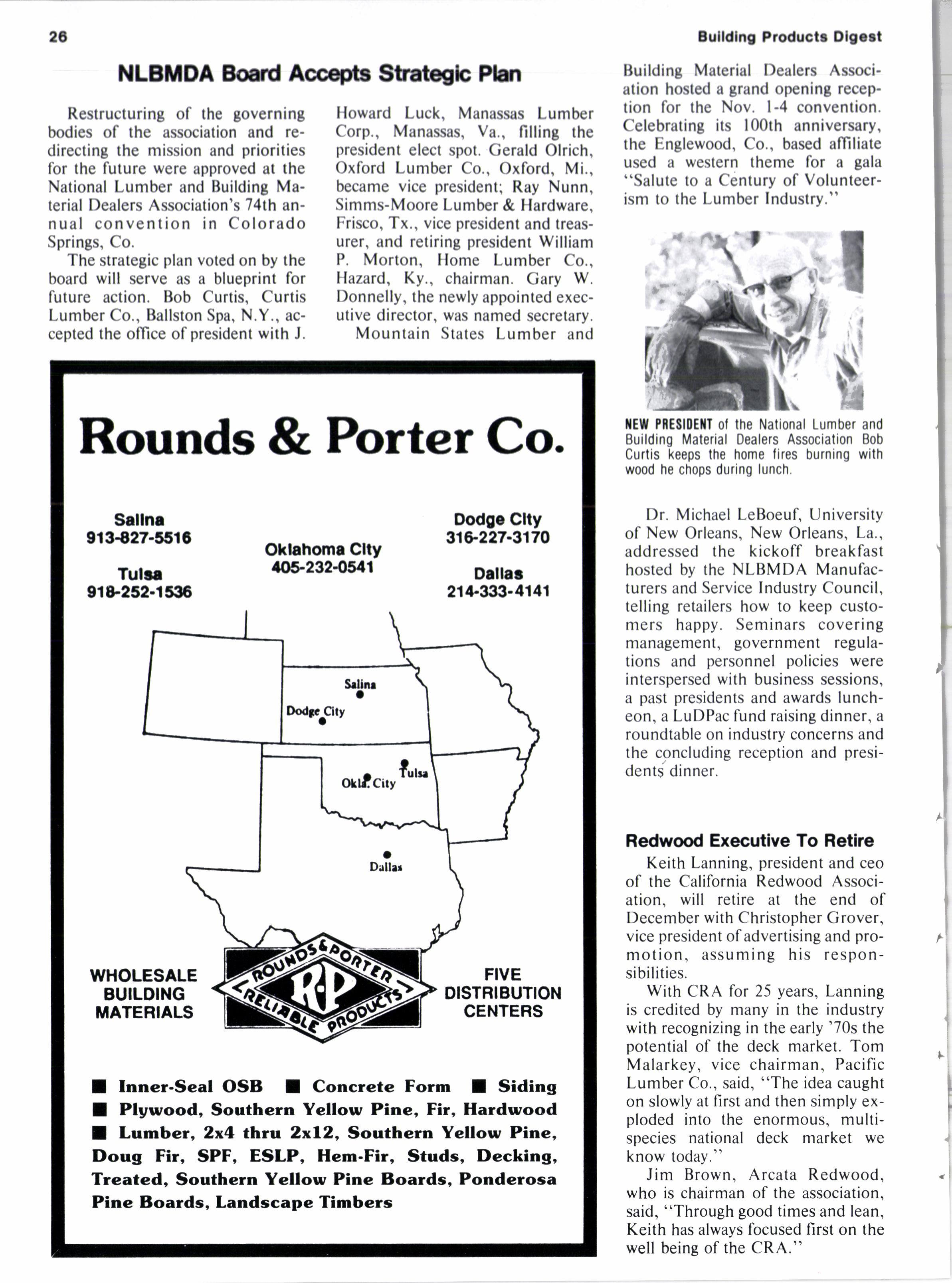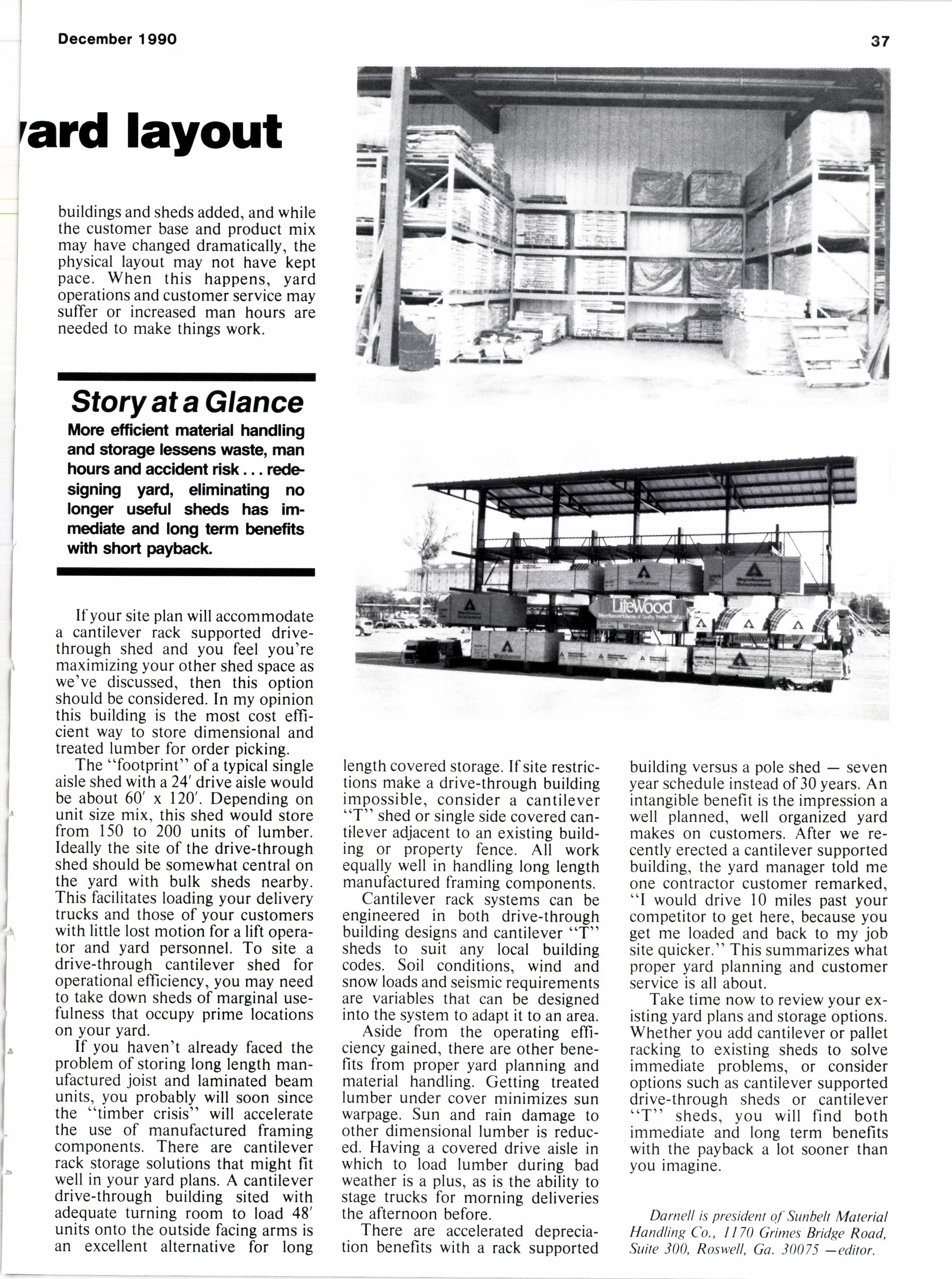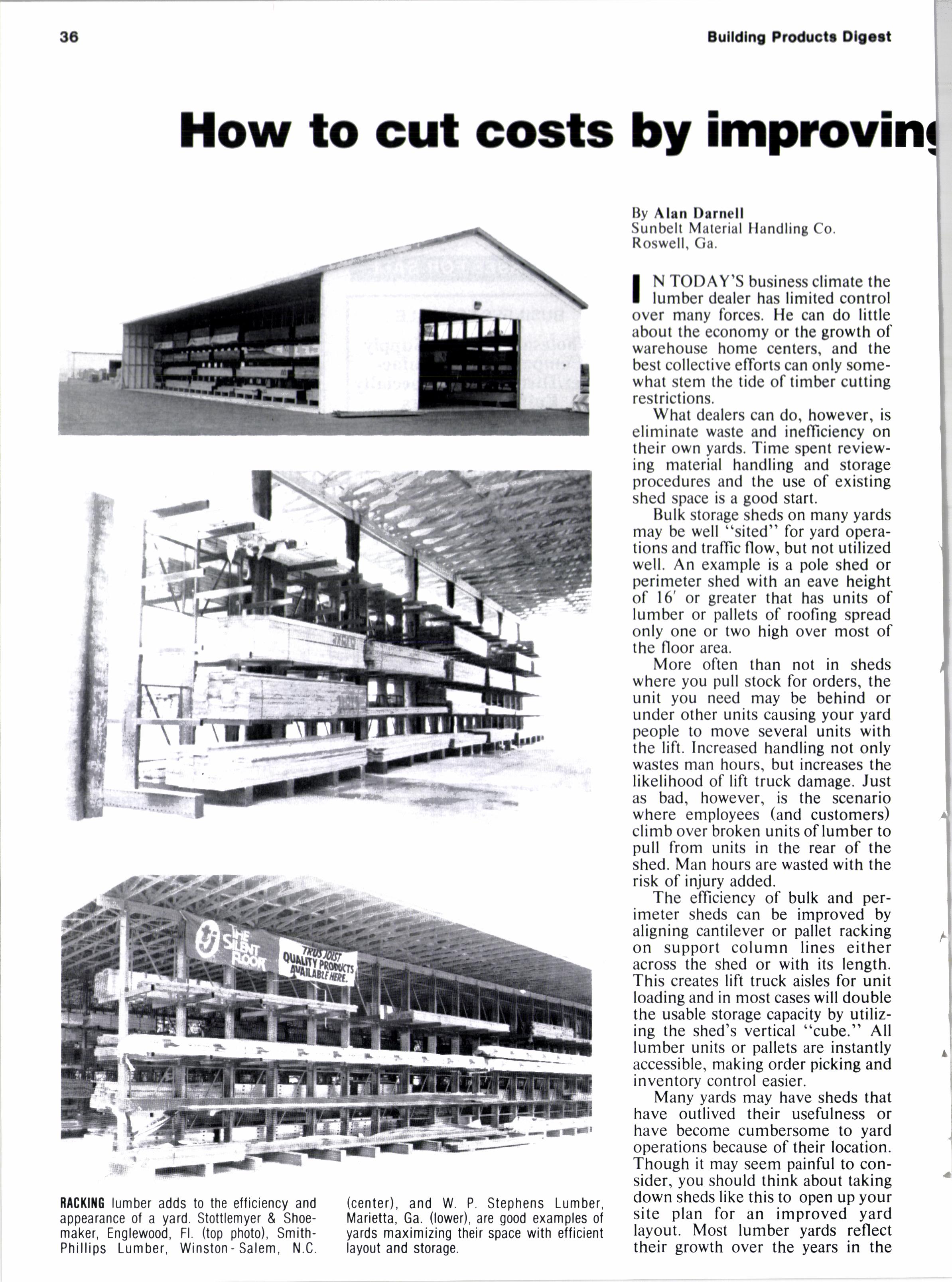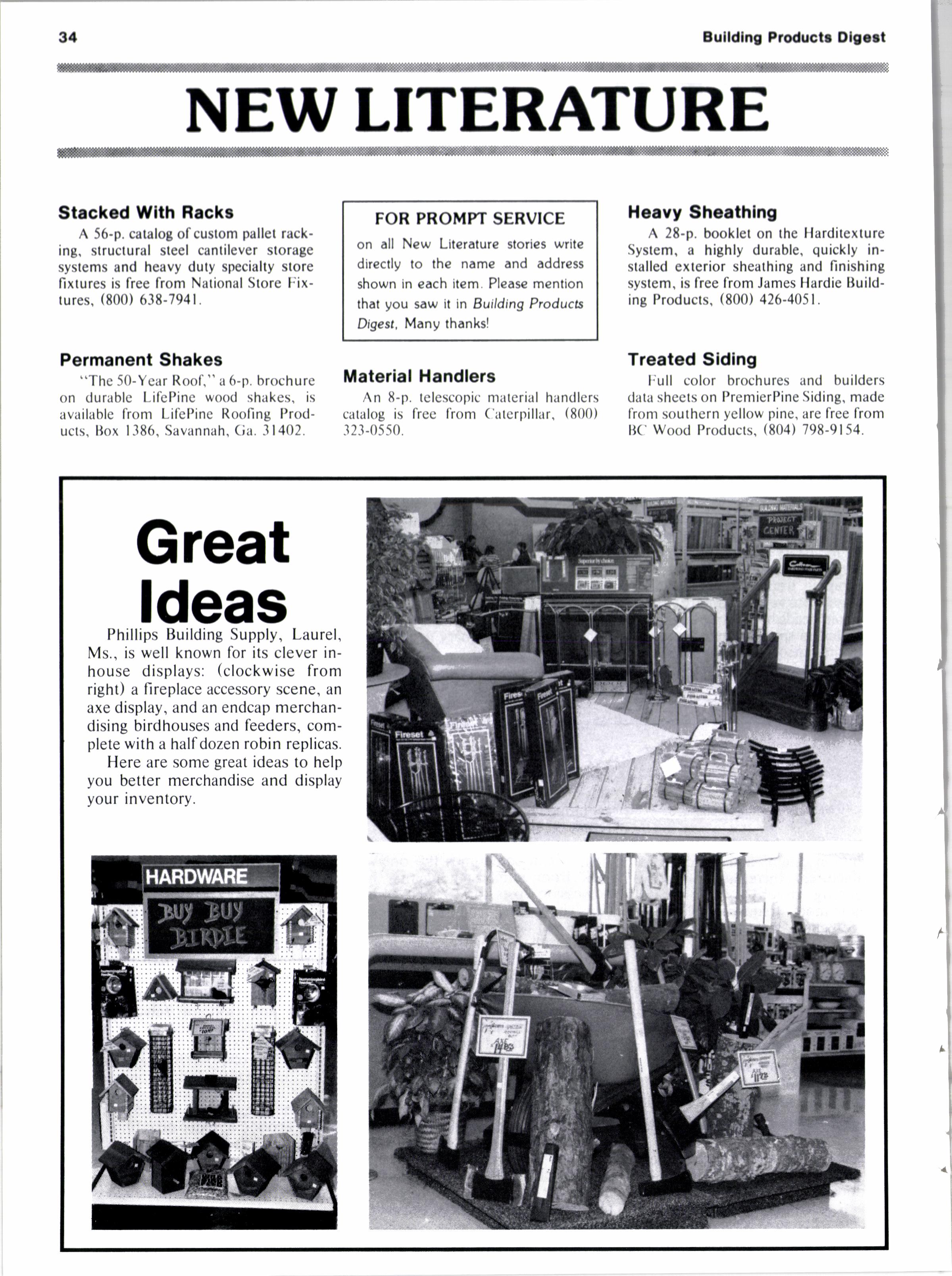
3 minute read
R&R Upbeat
By Robert C. Doran Director, Marketing Research & Planning Gold Bond Building Products
llt HILE the residential repair and lU remodeling market is difficult to track, most experts believe it is significant with approximately $l0l billion spent in l 989.
The mid1980s presented a period of dramatic growth for remodeling, although the market slowed in late 1986 and registered a decline in 1989 for the first time since the recession of 1982. However, remodeling is expected to return to its pattern of growth in late 1990 and 1991.
This expectation is based on demographic trends and economic forecasts. Surveys indicate that household heads between the ages of 35-54 tend to spend higher percentages of their incomes on remodeling. The U.S. Census Bureau has indi- cated that during the 1990s, much of the growth in our population will be in the 35-54 age group as the "baby boom" population ages.
Economic factors also appear to support remodeling. As house price increases moderate and mortgage rates continue in the l0o/o range, there may be more incentive for homeowners to renovate their existing homes rather than trading up with hopes of making a large profit as they did in previous years.
The residential remodeling market is usually classified into three segments. (l) About 400/o of total spending is for maintenance and repairs, such as fixing a leaking roof, and many of these jobs are do-ityourself activities. (2) Major replacements such as a new furnace, new plumbing or siding, account for approximately 200/o of the total. (3) Additions and alterations, such as a new room or big kitchen or bathroom remodeling projects, account for approximately 400/0. However, additions and alterations are usually considered discretionary as they can be easily postponed.
A number of research studies have been conducted on remodeling. Most indicate that kitchen and bathroom remodeling are the most common addition/alteration projects. Also, remodeling expenditures tend to be higher in areas with older homes.
Story at a Glance
Remodeling to hit $109 billion in '91 ...3$54 age group spends the most... kitchen & bath pro jects arc the favorites.
Remodeling activity in the first quarter of 1990 reached a seasonallyadjusted annual rate of $ll4 billion - a record high. It is estimated that remodeling activity in 1990 will total $106 billion which is about 50/o above 1989. l99l should show continual growth with repair and remodeling increasing to about $109 billion, a slightly slower rate of growth than in 1990 primarily due to a drop-off in the additions and alterations segment resulting from a projected economic slowdown in the coming year.
Stay Liquid
(Continued.fiom page 23) ing options available from reloads, distribution centers and direct from manufacturers. Increasing turns by decreasing inventory on hand through more frequent deliveries from suppliers will free up much needed cash.
Story at a Glance
Liquidity will be a key to economic survival inventory rnanagement can s$reeten cash flow. retailers must take a hard look at rslcosts.
Even the savviest managers often base buying decisions on just two questions: "How much does the product cost?" and "Can I get it cheaper?" Purchase price is only one element of the cost of acquiring in- ventory. It makes sense to take a closer look at the "hidden costs" of acquiring and stocking product for resale.
Acquisition costs always get the firstand sometimes the onlv - look from purchasing agents, but possession costs can be just as expensive. Buying from the cheapest source can be an expensive proposition as well. That's especially true if it means sacrificing service. Errors, expediting delays and quality problems can seriously erode profits. Retailers who avoid the "lowest-price trap" and embrace the concept of total procurement cost can improve turn/earn ratios and boost deliverv time, customer service and ultimately, profits.
For some, definite advantages exist for buying large quantities of product directly from the mill. It's a tried-and-true method of economizing. But more often than not it requires a commitment to a huge supply, which has a negative impact on turn/earn ratios.
Buying mill-direct may make sense, but only after the true cost implications of buying and holding the materials until they're sold are analyzed. The initial savings typically must be paid out in a variety of longterm expenses such as increased shipping costs, storage, overhead and insurance costs of warehousing, added interest payments, taxes and shrinkage. After a hard look at the numbers, a reliable wholesaler-distributor relationship often proves to be the best bet for many retailers.
In a world where keeping costs down and cash on hand is mandatory,. retailers need to ask more questions about their suppliers' services. Too often, they forget or neglect the services local suppliers can provide: buying goods in quantity, warehousing them, breaking them into economic order quantities, and delivering them just-in-time.
Improved cash flow and inventory management won't happen overnight. It takes a complete commitment and it means using every tool and resource possible,

